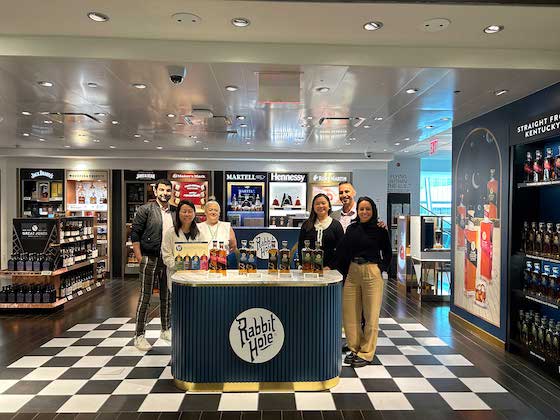U.S. whiskey has rebounded well across the Americas this year as the purchasing habits of traveling consumers become increasingly more adventurous, writes Joe Bates.
The U.S. whiskey category enjoyed a very strong period of recovery in the duty free Americas market last year as international travel in the region rebounded from COVID-19, and consumer demand for American whiskeys continued to grow. According to data from research firm the IWSR Drinks Market Analysis, sales volumes of U.S. whiskey in the Americas travel retail market soared 94% in 2022– a better performance than the overall spirits category, which grew 74% worldwide over the same period.
The category has continued to fare well in 2023 although growth has been limited in the case of some in-demand brands by supply constraints.
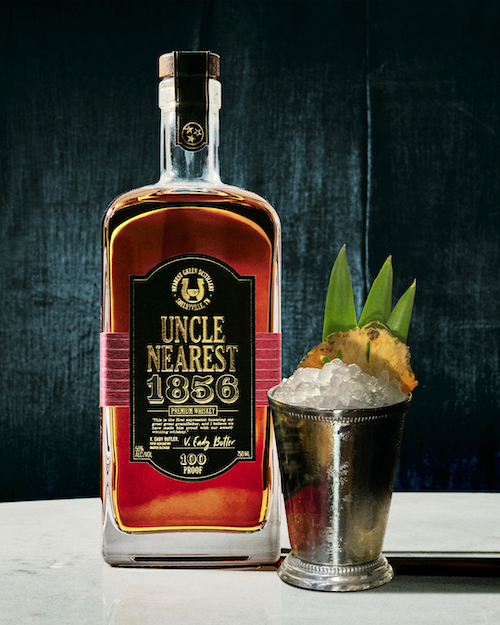
“Year-to-date, we are seeing 21% growth versus 2022 in the American whiskey category,” reveals Robert de Monchy, managing director of duty free drinks distributor MONARQ Group, whose U.S. whiskey portfolio includes Jack Daniel’s, Woodford Reserve, Houston- based Yellow Rose whiskey and Uncle Nearest, a Tennessee whiskey. “The growth is across the board in the cruise channel, as well as at airports.
“Our American whiskies can now be found on Royal Caribbean, Virgin Voyages and Disney Cruise lines,” de Monchy adds. “We have partnered with Starboard Cruise Services and Heinemann Americas for duty free retail stores onboard cruise ships. We have also supported key airport retailers such as DFS USA, [Newark airport retailer] EJE Travel Retail and International Shoppes with our American whiskey portfolio.”
Manuel González, brand marketing director GTR at Beam Suntory, the owner of Jim Beam, the best-selling bourbon in travel retail, as well as Maker’s Mark and several small-batch bourbons, is also bullish about the Americas region.
“We have enjoyed a very positive performance versus 2022, with a +32% volume increase in GTR Americas. Overall, growth is in line with company projections. However, some challenges regarding liquid availability occurred at the beginning of the year.”
A major focus this year for Beam Suntory is to continue its work to make Maker’s Mark a “global whiskey icon”, a brand-building exercise González says involves consumer-first brand experiences and exciting new product development such as the recent city-themed Wood Finishing releases which saw New York and Sydney limited editions being released last year. Singapore, London and Frankfurt expressions are in the pipeline for 2023.
González also reveals that an ultra- premium Maker’s Mark release is planned for GTR this year. Cellar Aged is a blend of 11 and 12-year-old bourbons. “We are able to release this unprecedented version of a much older Maker’s Mark thanks to our proprietary cellar built into the limestone face of Star Hill Farm that drastically changes the aging environment compared with our outdoor rick houses,” he explains.
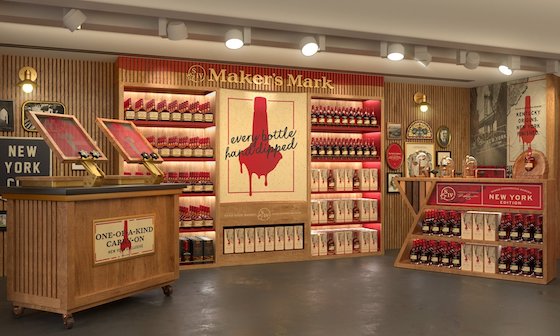
Stock availability remains a problem
González’s mention of albeit temporary stock availability issues is a theme others in the industry echo. According to the Kentucky Distillers Association, bourbon production has skyrocketed over 360% since the turn of the millennium; a record 11.4 million bourbon barrels are ageing in the U.S. state but supply is still failing to keep up with demand.
“Sazerac has made huge strides in terms of investment to set down against stock,” says John Kilmartin, vice-president of sales at travel retail drinks agency Duty Free Global, whose U.S. whiskey portfolio includes Sazerac-owned Buffalo Trace, George T. Stagg, W. L. Weller, 1792, Blanton’s and Eagle Rare. “However, when you are ageing whiskey, you can’t just turn the taps on. The demand is there now and more liquid is becoming available but we could probably double or triple it and move it through the [duty free] channel.
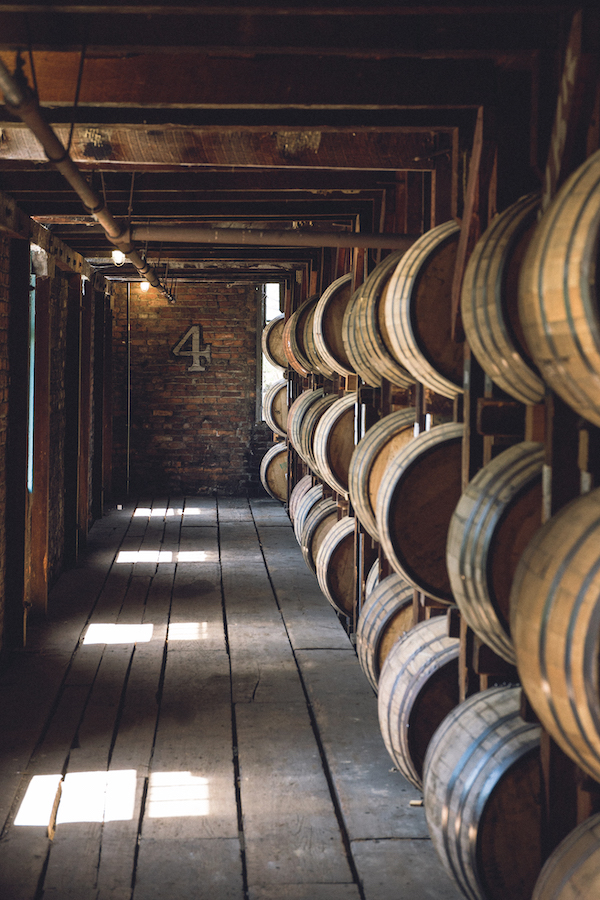
“I think from a GTR perspective, transplanting back to what I see internationally both in the on-trade and off- trades, there’s been an explosion in demand for American whiskeys,” Kilmartin adds. “We look for that exploratory phase that non-Americans maybe go through which would be Scotch whisky, then Irish and maybe into Japanese. I think consumers are also now beginning to understand the uniqueness and complexity of American whiskies.
“I definitely think that’s translating into the success we’re having in travel retail in the Americas and outside America. So, I’m happy to say that although it’s early days, I genuinely think American whiskeys, bourbons, ryes, American malts, and blends are all going to keep growing.”
U.S. whiskeys grow Latin American footprint In a face-off between Scotch and U.S. whiskey in Latin America, it’s Scotland’s most famous export that would emerge as the victor. Last year, the re-exporting hub of Panama was the seventh biggest value market for Scotch whisky worldwide, while Mexico was the ninth biggest volume market, according to the Scotch Whisky Association. Yet U.S. whiskey is gaining ground in the wider region, a trend which is filtering down into duty free sales trends. According to IWSR, sales in Latin America duty free (including the Caribbean and Mexico), grew 114% last year.
“There’s definitely demand if you look at the Caribbean when you consider all the [U.S.] snowbirds who travel there,” reveals Duty Free Global’s Kilmartin. “There’s an opportunity there and then if you consider the number of Latin Americans that are living and working in the U.S., traveling backwards and forwards. We see big potential in markets like Brazil, Mexico and Argentina. I think we’ll see very positive growth figures coming out over the next five years.”
Beam Suntory’s González is also upbeat about the Caribbean’s performance this year– the company forecasts that Jim Beam will grow its duty free sales there by 16% in 2023 versus 2022. The Caribbean- oriented cruise sector is set to be another strong performer with forecasted growth of 18% this year with sales volumes expected to be higher than in pre-COVID 2019.
In contrast, David Rodiek, VP managing director GTR of Brown-Forman, the owner of Jack Daniel’s, the best-selling U.S. whiskey in duty free, as well as Woodford Reserve bourbon, takes a more cautious view of the continent’s progress. “Latin America’s recovery had a slower path than other regions due to longer lead times, the FX rate and macroeconomic impact. However, Jack Daniel’s and Woodford Reserve demand remains strong in duty free and domestic markets.”
Rodiek explains that Brown-Forman is planning to leverage its ongoing sponsorship of the Formula One McLaren motor racing team, which was announced last year, with Q4 activations at the arrivals zones of two Latin American airports whose cities are hosting F1 races in the coming months– Mexico City (October 29) and Sao Paolo (November 5).
U.S. whiskey makes ground north of the border
Despite possessing its own vibrant domestic whisky market, Canada continues to be a fertile market for U.S. whiskey distillers. According to the Distilled Spirits Council of the U..S, Canada was the fifth biggest export market for U.S. whiskey last year with exports worth $80m, up from $68m in 2021. This upward trajectory was also mirrored in the country’s duty free market which continued to recover from the effects of COVID.
Brown Forman’s Rodiek says both Jack Daniel’s and Woodford Reserve have shown good duty free growth in Canada this year, especially in the airport channel where COVID-19 travel restrictions were removed before the border store sector. “Toronto [airport] is driving the growth there, with Vancouver [airport] further behind as we await the return of travelers from China. On the borders, where COVID restrictions were in place until October 2022, there’s been a slower recovery.”
At Ontario-based Ambassador Duty Free, liquor & tobacco category manager Mike Maskery reveals overall liquor sales at his border store are up over 50% year-on-year despite some COVID vaccination requirements remaining in place until May. The operator currently has 29 different American whiskey SKUs on offer compared to 64 Canadian whiskies, the retailer’s top-selling spirits category. The five top-selling U.S. whiskey SKUs are Buffalo Trace, Woodford Reserve, Jack Daniel’s 1.5 liter, Jim Beam and Jack Daniel’s 1 liter.
“In our store, the customers are going towards the craft labels rather than the big-name brands,” Maskery reveals. “Most of these are highly allocated worldwide and very hard for us to get in-store. For example, our allocation of Blanton’s bourbon for all of 2023 was 54 bottles.”
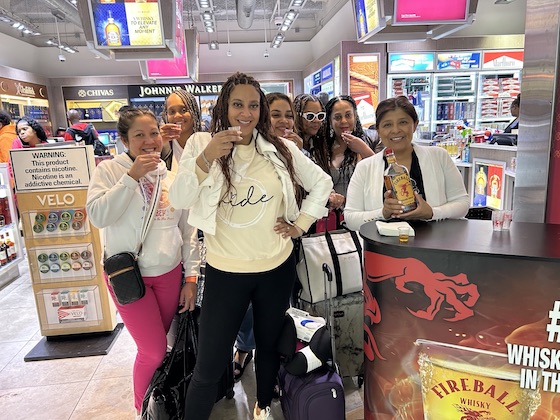
Traveling consumers become more adventurous
Maskery’s observation that more and more travelers are in exploration mode when purchasing in duty free is a pertinent one. For decades, Kentucky bourbons and Tennessee whiskeys were the two main U.S. whiskey styles which traveling consumers recognized and even today, the big brands of Jim Beam, Jack Daniel’s, Buffalo Trace and Wild Turkey dominate duty free shelf facings. Yet now new regional whiskey styles are emerging thanks to the proliferation of craft distilleries in every corner of the country.
These craft distillers are experimenting with different grains, mash bills, fermentation techniques, aging methods, and finishing techniques to create unique and flavorful whiskies. Some of
the most popular styles include the revival of rye whiskeys, mesquite wood-smoked single malts, peated single malts and corn whiskeys.
Scott Halpern, executive vice president at International Shoppes, which runs duty free stores at U.S. airports such as New York JFK, Washington Dulles and George Bush Intercontinental, has noticed how travelers are becoming more experimental in their purchasing habits.
“You have your Jack Daniel’s, Maker’s Mark and Jim Beam– they always do well for us. But we also see that a lot of people are exploring and wanting something that they cannot get back home.
“That’s been the story for us for a long time. They’re looking for a bottle of old faithful and a bottle of something new and unique. We have quite a few New York bourbons, for instance. People buy those; that’s great. We also have some Texas whiskeys that appeal to the Far Eastern market and those equally do well. People buy them as gifts or as a memento of where they were.”
Halpern says International Shoppes offers travelers an in-store range of 30-40 small-batch specials. “We try to mix and match a bit,” he explains. “In that setting, it works. They are all unique brands you are not going to get anywhere else in the world.”
Flavored U.S. whiskeys are another growth area for International Shoppes, according to Halpern. “Fireball was the first to market. It really pushed the envelope on flavored North American whiskey. I don’t drink them personally but it is amazing to me how much Fireball and Jack [Daniel’s] Fire that we sell…We also fought really hard to get Skrewball [Peanut Butter] whiskey about a year ago. It’s done very well. It’s a peanut butter [flavored] whiskey. It’s an acquired taste and requires a different palate but it has shown that it has done very well.
“The market is changing,” he concludes. “Where vodka was 10 years ago with every flavor under the sun came up, you are starting to see that and there’s probably going to be a little push towards that in the bourbon world.”
Rabbit Hole Whiskey jumps into U.S. duty free
A clear sign of the growing international popularity of U.S. whiskeys is the increasing number of overseas acquisitions in recent years such as Diageo’s acquisition of Texas craft distiller Balcones and Campari Group’s purchase of a majority stake in Wilderness Trail Distillery in 2022. A year earlier, Pernod Ricard USA’s New Brand Venture division took a controlling stake in the award- winning bourbon producer Rabbit Hole Whiskey.
In July this year, Rabbit Hole Whiskey made its travel retail debut at JFK International Airport Terminal 4 in partnership with DFS Group. The launch centered on four of the distiller’s stand- out expressions: a four-grain triple malt bourbon (Cavehill), a sour mash rye whiskey (Boxergrail), a high-rye bourbon (Heigold) and a PX sherry-finished bourbon (Dareringer).
“Rabbit Hole works exclusively with malting houses across the U.S. and Europe,” explains Pernod Ricard GTR Group Brand Director Lisa McCann. “This is done to capture the most distinct flavors and is unique to the industry. We use malted grains to add depth and diversity to the palette; an exciting process when 49% of the bottle is left to experimentation.
“Continually pushing the boundaries of flavor, Rabbit Hole Whiskies are always 110-proof at barrel entry,” she adds. “Not conforming to the industry maximum 125-proof standard, Rabbit Hole Whiskies do this to enhance their flavor notes. As a general practice, we believe that adding water before the aging process has peaked changes the physical structure of the spirit, facilitating a better interaction with the barrel as it matures.
McCann says the JFK launch was a “great success” with DFS requesting the launch activation period be extended.
“Following on from JFK this summer, our next activation, in partnership with DFS again, will showcase the core range in LAX, Tom Bradley International Terminal, in October, through to December,” she reveals. “This is a prime occasion for gifting as we enter the festive period.
“Celebrity Cruises will be launching the Rabbit Hole Single Barrel range, setting sail from November 2023,” McCann adds. “This small-batch bourbon will be available for purchase on board the new [Celebrity] ship, The Ascent. Cocktail listings and a flight program will also feature onboard– something to satisfy the curious mind and those already familiar with American whiskey.”
With 31.5 million guests expected to take a cruise this year, the cruise line sector will likely prove one of the fastest- growing markets for U.S. whiskeys in the Americas travel retail this year. Given U.S. whiskey’s ongoing renaissance, the wider post-COVID outlook for the category looks bright too–IWSR predicts U.S. whiskey will grow at a CAGR of 9% in the Americas travel retail channel over the next four years.
“American whiskey is establishing itself and it’s going to be one of those rising categories,” says Duty Free Global’s Kilmartin. “We’ve all been talking about ultra-premium agave for a number of years. The trajectory it’s been on didn’t happen yesterday or the day before. It’s been something building for 20 years and I think American whiskey is heading in that direction as well.”
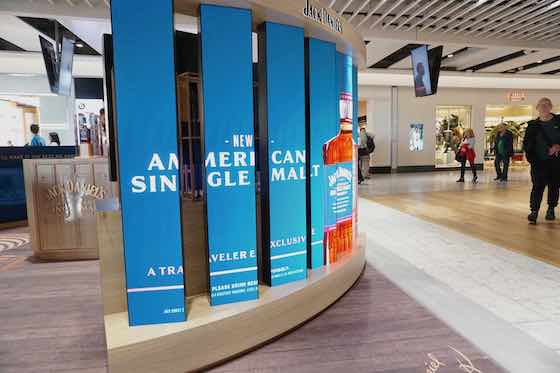
Jack Daniel’s Single Malt’s global launch gets underway
Jack Daniel’s held on to its position as the second best-selling spirit in travel retail last year, according to the IWSR Drinks Market Analysis. The big GTR launch for Brown-Forman’s flagship brand this year is undoubtedly the travel retail exclusive Jack Daniel’s American Single Malt which from June onwards began rolling out to over 40 leading international hubs such as Singapore Changi and London Heathrow. The global launch will reach an estimated 13 million traveling shoppers and involve 60,000 tastings.
Made with 100% American malted barley, the new Jack Daniel’s expression is softened using the whiskey house’s traditional charcoal mellowing process; aged in American oak barrels and then finished in ex-oloroso Spanish sherry casks. The distinctive decanter-style bottle of the new whiskey features an embossed distillery stamp of America’s first registered distillery and a natural cork stopper.





